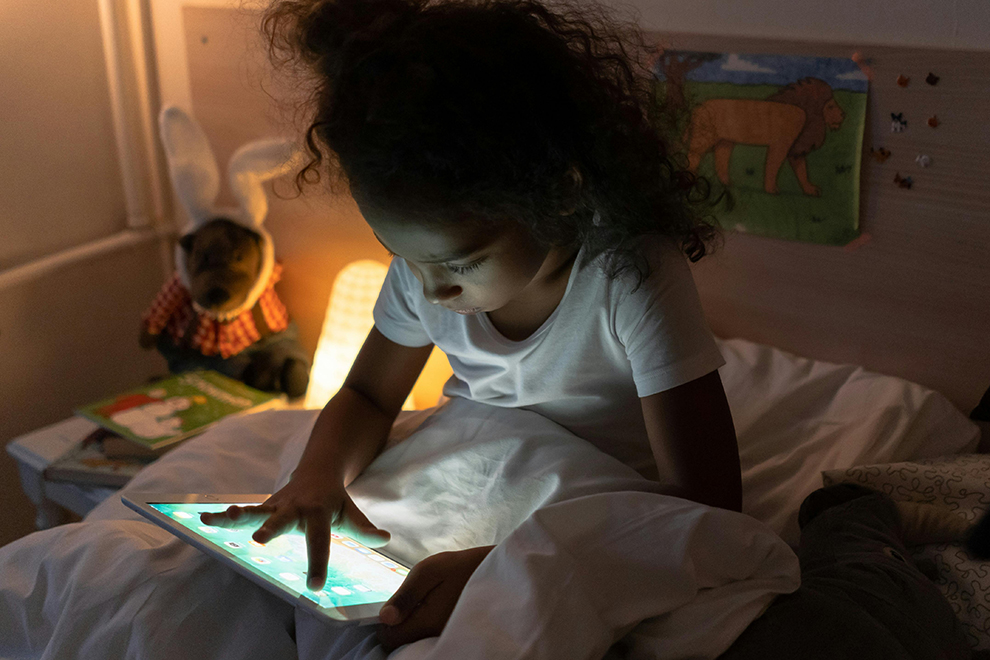Q. Lately, I’ve noticed that my 10-year-old son seems to be more fixated on playing video games, especially as the winter months have set in. After school and on weekends, he constantly begs to play until I give in and then stays on for hours on end. He doesn’t seem interested in outdoor activities or spending time with friends. This has left me wondering: What should I do?
A. It is important to notice when our digital media use (whether it is video games, social media, or streaming) gets to a place where it’s interfering with other parts of our life. When our time gaming, streaming, or scrolling begins to interrupt our interest in connecting with people or prohibits our ability to spend time outside, it is cause for concern. Excessive gaming or use of digital media increases risk of depression and anxiety and can increase aggression, irritability, and avoidance behaviors. The digital media we now have access to exerts enormous influence over users, and it’s something, as parents, that can be overwhelming to manage. However, it is essential as parents and caregivers that we are intentional about setting family expectations for media use and that we model healthy behaviors with our own devices.
Video games in particular impact children’s motivations and interests. They’re carefully designed to keep players engaged for as long as possible. Like social media, they are high-dopamine activities, meaning they trigger the release of dopamine, a neurotransmitter in our brain that’s central to the reward system. This release creates pleasurable feelings and motivates us to repeat the behavior. Video games further enhance this effect with competitive elements or variable reward schedules, making it even harder to tear away. When playing a game, the brain is driven to continue, often to the detriment of other activities.
What makes this even more challenging is that the prefrontal cortex, the area of the brain responsible for impulse control, self-regulation, and decision-making, isn’t fully developed until the age of 25. Without this “braking system,” it’s easy for activities that flood the brain with dopamine to take over. Even adults struggle with this, as excessive use of digital media can hinder engagement in other areas of life. For children, the pull of digital media is even stronger. That’s why it’s vital for adults to step in, set boundaries, and guide their kids toward a balance that leaves space for screen-free play, social interaction, and creativity in the real world. Children often lack the capacity to regulate their screen time independently, making it essential for parents to take charge.
It may be helpful to start with a conversation with your son about what you’re noticing about his video game use. Describe the pattern you see and share with him your concern about his overall well-being and your interest in being sure he has time for all the things in his life. Validate his feelings about pulling away from video games (this may be intense… remember the dopamine!) while letting him know that you plan to set new boundaries in the home about digital media use. The transition to more of his time being in lower-dopamine, screen-free activities will take some time. He may wrestle with boredom. This is okay! Boredom is a wonderful place for creativity to grow. Things like riding a bike, reading a book, and playing with friends offer huge benefits to your son’s development, but the reward system in our brain is slower to respond than when we are playing Mario Kart or scrolling TikTok. For example, shooting a basketball in real life requires practice, focus, and energy – but the reward, in the form of success, is slower and more satisfying in the long run. In a video game, the same action is often rewarded almost instantly. So, while it may take time for his motivation to shift back toward real-life activities, trust that it will come –just be prepared to balance validation with firm boundaries.
You may be wondering, where do I even begin with resetting the expectations for digital media in our home? For some families facing this situation, it is helpful to start with a “digital detox” – a week or more of no screens – to give everyone a chance to reset and recover. This can provide the space needed for open discussions and connection between family members. For other families, you may start by introducing new, clear expectations about when and how digital media is to be used in the home. It’s a good idea to decide on areas of the home where video games or screens are allowed to be used (for example, only in the living room or kitchen but never in bedrooms) and times of day where this is allowed (one hour after school, two hours on the weekends, etc.)
When setting these boundaries, remain firm, calm, and kind. Remind yourself why you’re taking this new approach. When a child meets the end of their allotted time on a video game, it’s not enough to say “please turn it off” four or five times, as this is not truly setting a boundary but rather making a request. Setting a boundary looks like saying “it is time to turn the game off, please do so now or I can do it for you.” Of course, providing verbal reminders before the end of the time and repeating the expectations about screen use is helpful to build your son’s understanding. It might be helpful to create a plan for how the time after the video game will be spent, for example, planning to take a walk outside together.
While setting new expectations around screen use is warranted, it is also important to engage in open conversations with your child that foster critical thinking and trust. We want to join in our children’s world with things that interest them, including their favorite shows, video games, and apps. Ask questions about what he enjoys about the game, ask to play with him, and explore the benefits of the game. Video games can provide benefits such as building visual-spatial skills, relaxation, and outlets for creativity. However, these benefits depend on the types of games being played and whether the video games are part of a balanced day in a child’s life.
We all benefit from revisiting our use of digital media from time to time and will have to adjust our family expectations seasonally. What’s most important is staying attuned to the role digital media plays in our children’s lives and being proactive in setting (and resetting) expectations as needed.





